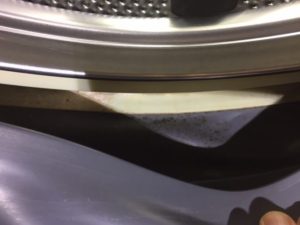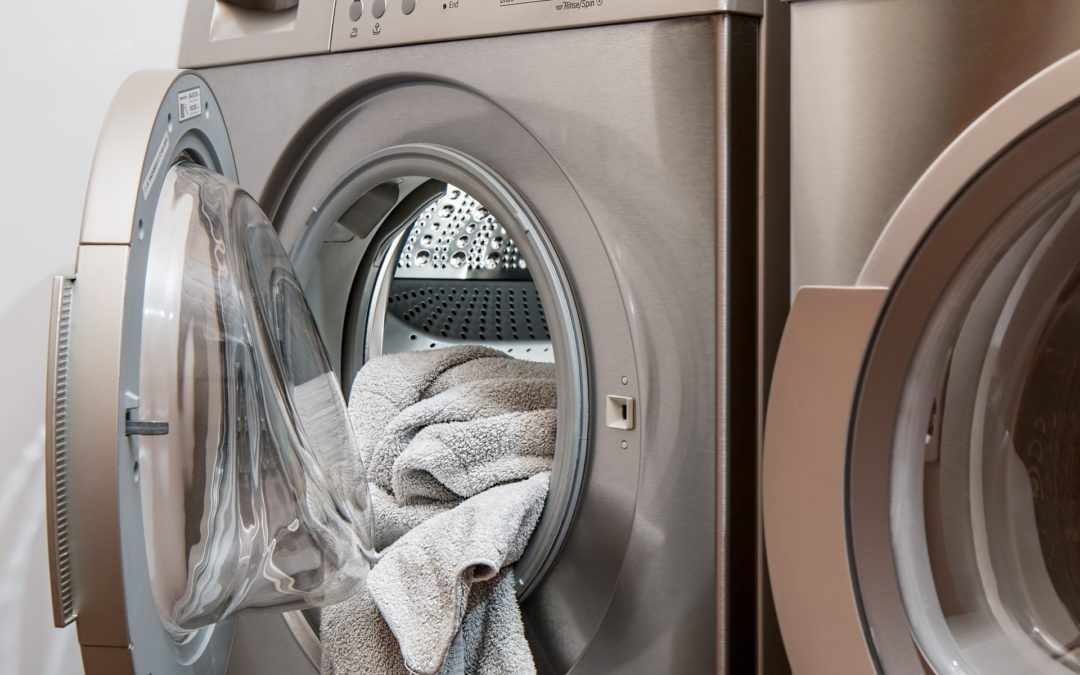Is Your Front Loading Washing Machine Causing You Health Problems?
How much thought have you given to the health of your washing machine? And by that, I mean, have you considered how your washing machine contributes to your health?
For most of us, this answer is ‘Uh, not at all! Why would I think about that?’ It may not seem like there is any correlation between your laundry room and your health, but believe me, there most certainly is!
The problem is actually quite easy to understand. It starts with the presence of water. Water of course is as essential as air for our survival. Our body is over 70% water, and we must drink a lot of it every single day for optimal health. Life would not exist without it!
But, in the right circumstances, water can be extremely destructive. Think about how dangerous the ocean can be. Or the damage done by floods or severe rain. Water is not to be underestimated. It can keep us alive, and it can also kill us. The power of water deserves our respect and admiration.
But what does this have to do with your washing machine? Well, water of course is the primary thing that gets our clothes clean, along with soap and agitation. This of course is a good thing. But when water is allowed to sit in a dark space for too long (say 48 hours or more), then that’s when you begin to have problems.
Not only do you rely on water for survival, but so does bacteria, mold and other microbes. While bacteria and mold spores are everywhere in our environment, the natural world lives in harmony with them. But, when you trap water in a damp, dark environment, you create the perfect space for mold to proliferate. If that space is within your home, you create the potential for exposing anyone in that home to unhealthy levels of mold spores.
You can see where this going right? Your washing machine is a dark, damp space. Do you have mold in your washing machine? You may be thinking, ‘Well, if that was the case, I would know about it right?’ Or, ‘I’ve been using this washing machine for years and I’ve never had a problem so I think it’s ok.’
I hope that is true, I hope you don’t have an issue with your machine. But, you should still have it checked. You see, I find mold in washing machines on a weekly basis. I often get calls from people that are having health issues, and they want to make sure the cause of their problems are not coming from their homes. I will do a full assessment of their EMF exposure, along with mold and other air quality concerns. I often find numerous areas of concern when it comes to mold, but by far, the most common source I find is from front-loading washing machines!
Here is the problem: the way that front loaders are designed, it’s virtually impossible for all of the water to efficiently drain from all the machines components. Water gets behind and underneath the gasket, where I almost always find microbial growth to some degree. This is because after you do a load of laundry, you close the door and walk away – sometimes for days. This dark and wet environment encourages rapid microbial growth.

Most of the time I don’t even need to look inside the machine or take a sample, I can smell it immediately when I open the door! Perhaps you know what I’m talking about. Does your machine have that musty, damp smell? Or have you been using it so long you don’t even recognize it? If you think this may the case, I suggest you have an outsider (someone that does not live in the home), come take a sniff of your machine. Often times the smell will build up slowly over time and you become so adjusted to you that you can’t smell it. A ‘fresh’ nose will help identify a smell you may be immune to.
Of course, even if you don’t smell it, I suggest a thorough visual inspection of the machine to look for any visible staining or signs of growth. Don’t forget to get underneath the gasket. You may need to remove the gasket completely (please make sure you check with the manufacturer on how to do this, and make sure you know how to replace properly!). Use a good flashlight and look way back into the back of the machine. Sometimes it can be hiding in the very back and you might not be able to see it. If you see any signs, then it may be time to consider getting rid of the machine, and replacing it with a top loader. I know that a full replacement isn’t always practical or financially feasible, but if it is possible, then you should definitely do it. Even if you think your washer is fine at the moment, a problem may develop down the road.
If you can’t replace it now, then there are few things you can and should do to keep the problem at bay:
1. Make sure you keep the door of the washer open anytime it’s not running. This will help the machine to dry out to some degree between loads. Less moisture will be trapped with some airflow.
2. Dry the inside of the washer with a towel after each load. Make sure you get into those ‘foldy’ spaces around the gasket as well. Make sure you don’t leave wet clothes in the washer. Remove them promptly when the cycle is complete.
3. Wash the machine regularly to prevent any buildup. Some washers have a ‘clean cycle’ on them, which you can use. Other options include running a cycle (without clothes!) with some borax, vinegar, or essential oils like tea tree or neem. Another option is to use a special ‘Washing Machine Cleaner’ like the one from My Greenfills, or other brand.
4. If needed, hire a professional to come and thoroughly clean the machine. A well-trained professional will remove the gasket and get all the way to the back of the machine, getting rid of any microbial build up.
Each of these steps are important if you plan to keep your front loader. Ultimately though, I strongly recommend avoiding them altogether. The best way to avoid this issue is to have a top loader. However, it should be noted that front loaders can have similar issues themselves! I have seen front loaders with microbial growth with that unpleasant musty smell to match. If you’re wondering about your machine, then the same suggestions apply as to the front loaders. Do a good visual inspection of your unit and have an outsider do a ‘sniff’ test for you. You should also put your hand on the center agitator and move the basket around vigorously. Do you hear water slashing around? If you do, then the unit might not be draining completely. You’ll want to get a professional to help you diagnose and fix this problem to prevent microbial growth. You can also search for videos online on how to do this, there are many!
I also suggest the same maintenance tips as I shared for the front loader – keep the door open, dry it out if needed, clean it regularly, and have a professional clean it if necessary. Be sure to stay on top of the issue with a good maintenance schedule. This will help ensure you keep the machine as clean as possible.
While you’re at it, don’t forget to clean behind the dryer and make sure the dryer vent is unobstructed. This is one of the most common places for large accumulations of dust buildup in the house. You really want to minimize dust and bacteria accumulation to keep microbial growth at bay, and to improve your air quality in general. See my post on this topic here to learn more.
I suggest writing down these tasks in your calendar so you don’t forget them. A good rule of thumb is to clean the washer and behind the dryer monthly. Just add this to your regular schedule and it will soon become second nature.
Have more questions about the air quality inside your home? Call us today for a free 20 minute consultation. We’ll answer whatever questions you may have and help you identify next steps. You deserve a healthy home!


Cathy Cooke, BCHN, BBEC Holistic Nutritionist and Building Biologist is the founder of Whole Home and Body Health which provides EMF Assessments, Mold Testing, and Nutrition and Health Consulting located in Boise, Idaho. Cathy is available for consulting via skype and phone, and is also willing to travel as needed for home assessments. Schedule an appointment today!


Recent Comments